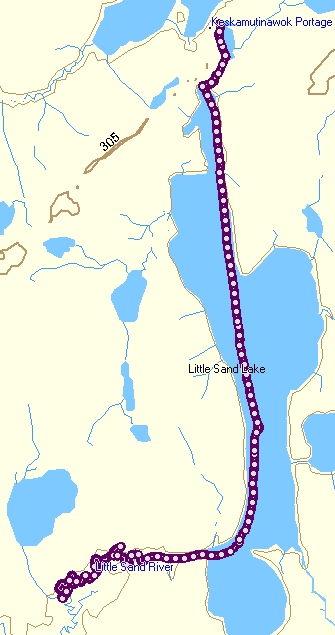|
Day 3 Time: 8 hrs 50 min Distance: 18.8 km (36.5) I was up at 10:00am; quite a few bugs in the hut did not inspire me to exit the bivy in any hurry. Breakfast consisted of tea and chocolate, pretty much the standard on most days. We were on the water a bit before 1:00pm ready to finish off Little Sand River and get to the height of land portage.
|
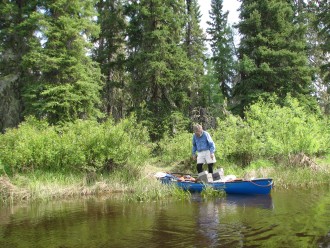
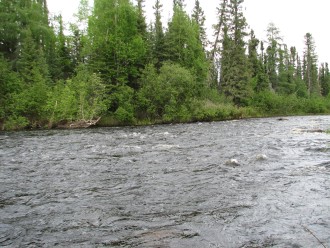
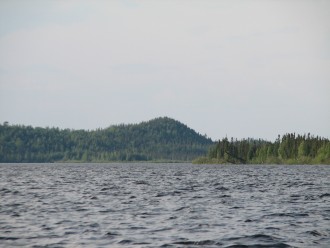
|
|
A few more logjams and lots of fast current were the order of the day, the river for the most part is quite deep, the banks very vertical so that even within a foot of shore the depth might be over 6 feet. I had one tricky spot I could not paddle against the current, I was able to "swim" along the bank holding some bushes while trying to pull my canoe along behind me, it was impossible to work from the bank itself without chopping out a pile of bushes! Steve managed to power through this using the yak paddle and continued upstream and out of sight leaving me cursing. When I caught up to him he was at the bottom of what could legitimately be called a class I rapid, the river had widened and become a shallow stretch of small boulders. We dragged the boats upstream a short distance to where the deep water resumed. This was in fact the indicator that our upstream slog was near the end. The river now was much wider with the current just noticeable, soon we were in sight of Little Sand Lake. 3 ½ hours after we left camp we made the left turn and had a look at the lake which stretched North towards the hills which were the likely location of the portage. The weather was mostly clear and warm, a light breeze helped bush us along on the 10km section to the end of the lake. 2 ½ hours of easy paddling and we were at the end, the exit (still upstream of course) is hidden in the very Northeast end, a large weedy area with only a narrow bit of open water to indicate this might be the way.
|
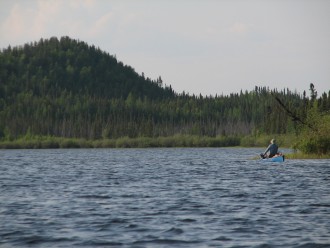
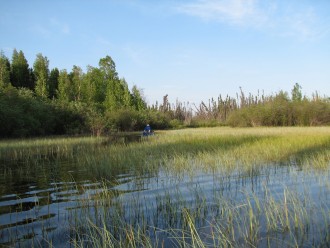
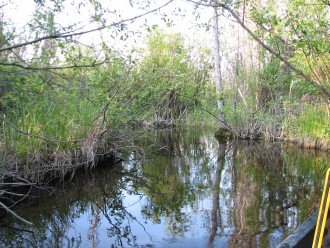
|
|
About 100 meters through the weeds brought us to a well established beaver dam, pulling the boats over we land in the resulting pond scanning for the proper way, detecting some current we head into a jumble of dead trees and alders, if not for the current one would surely think they were in a the middle of a swamp, in short order we are out of the boats to walk the narrow channel, breaking branches and tossing debris aside, some logs could be stood on to slide the canoes over, other lifted up to allow the boats to slide under. At one point we are forced to saw through several trees adding fresh evidence to that of others who have passed this way before us. I was a bit surprised when we abruptly came to the end of the little creek and into the small-unnamed lake. We were greeted first by loons and then the sound of wolves. At least one wolf was very close to shore although never visible through the thick growth. As we turned left we could see the blue roof of a cabin behind us, it is quite a distance from shore, no doubt access to it other than during the winter would be quite difficult.
|
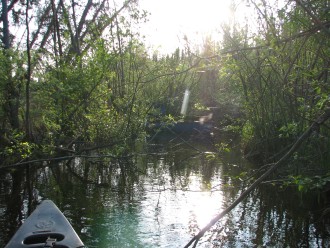
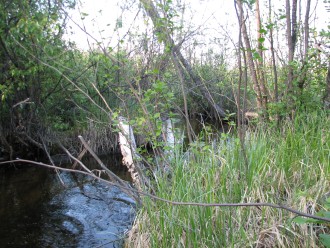
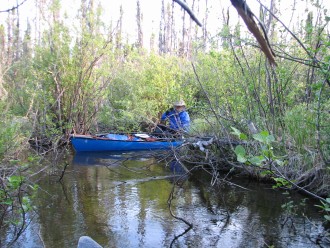
|
|
The portage campsite was readily visible from the water, plenty of clear space, a fire ring; some cuts poles and a trail leading off towards the portage presumably. We did paddle down the shore a bit to a spot that looked to be closer to the base of the esker, it was clear others had been this way as well, a faint trail led back into the trees and then to a wet bog, perhaps if dry there is access to the portage from here but not now. We went back to the proper site and set up the hut. It was 9:20 when we reached camp, a long day on the water. We organized our crap while nibbling some crackers and cheese, it's a nice site, the hut has a pretty good seal and we are using some coils to deal with the few sneaky ones. We split two MIAB and watched as the just past full moon rises over the lake. An orange ball gradually losing its colour as moves higher above the horizon. Another one of our usual late nights, it's well past 1:00am before we are off to sleep.
|
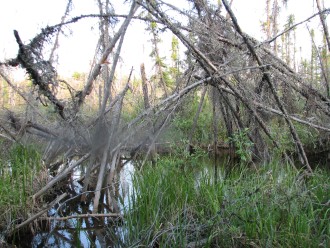
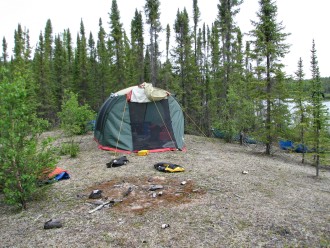
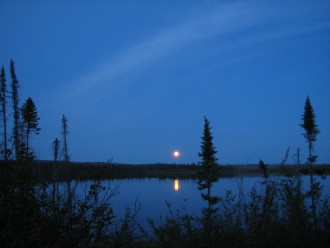
|
